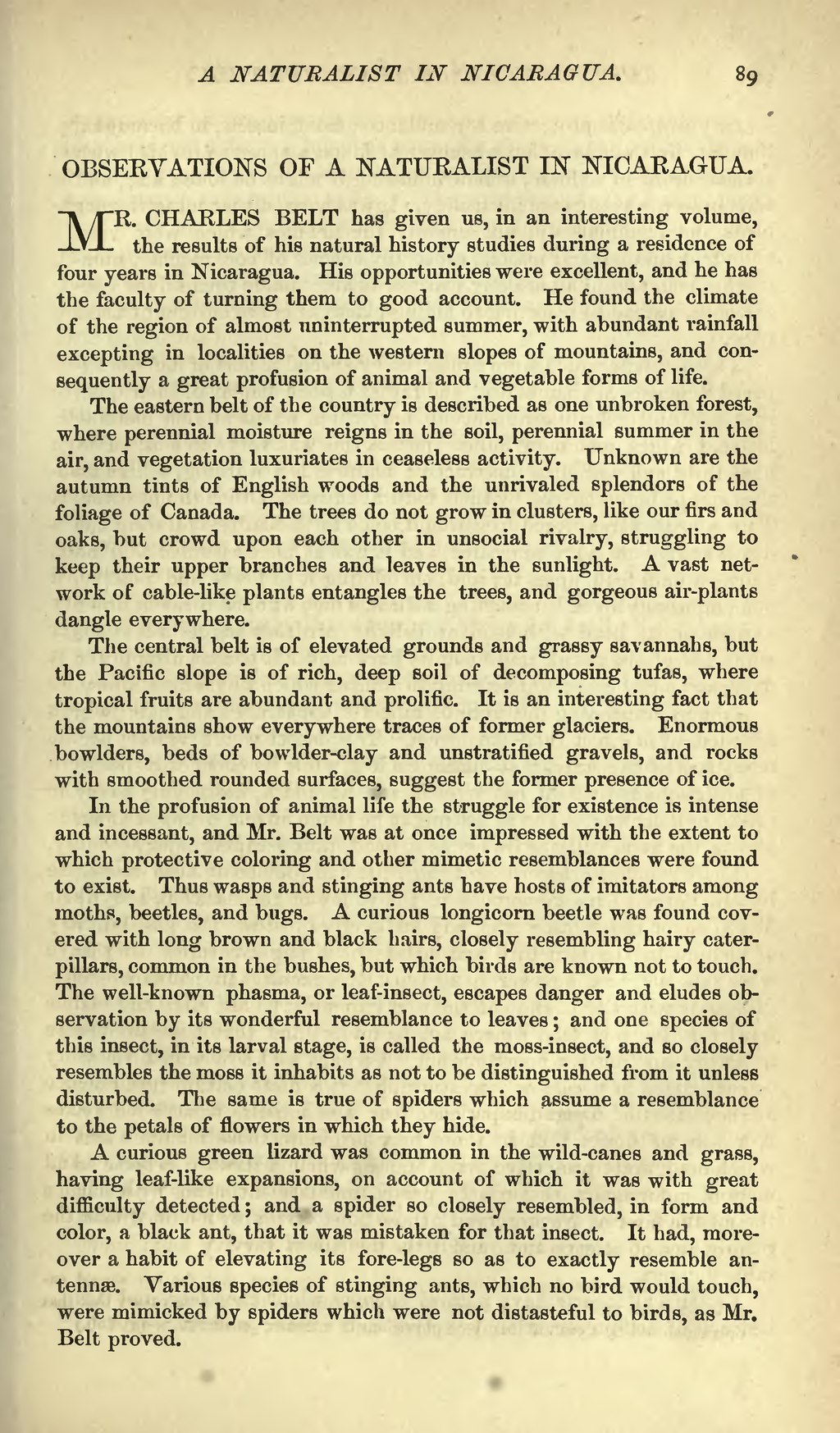| OBSERVATIONS OF A NATURALIST IN NICARAGUA. |
MR. CHARLES BELT has given us, in an interesting volume, the results of his natural history studies during a residence of four years in Nicaragua. His opportunities were excellent, and he has the faculty of turning them to good account. He found the climate of the region of almost uninterrupted summer, with abundant rainfall excepting in localities on the western slopes of mountains, and consequently a great profusion of animal and vegetable forms of life.
The eastern belt of the country is described as one unbroken forest, where perennial moisture reigns in the soil, perennial summer in the air, and vegetation luxuriates in ceaseless activity. Unknown are the autumn tints of English woods and the unrivaled splendors of the foliage of Canada. The trees do not grow in clusters, like our firs and oaks, but crowd upon each other in unsocial rivalry, struggling to keep their upper branches and leaves in the sunlight. A vast network of cable-like plants entangles the trees, and gorgeous air-plants dangle everywhere.
The central belt is of elevated grounds and grassy savannahs, but the Pacific slope is of rich, deep soil of decomposing tufas, where tropical fruits are abundant and prolific. It is an interesting fact that the mountains show everywhere traces of former glaciers. Enormous bowlders, beds of bowlder-clay and unstratified gravels, and rocks with smoothed rounded surfaces, suggest the former presence of ice.
In the profusion of animal life the struggle for existence is intense and incessant, and Mr. Belt was at once impressed with the extent to which protective coloring and other mimetic resemblances were found to exist. Thus wasps and stinging ants have hosts of imitators among moths, beetles, and bugs. A curious longicorn beetle was found covered with long brown and black hairs, closely resembling hairy caterpillars, common in the bushes, but which birds are known not to touch. The well-known phasma, or leaf-insect, escapes danger and eludes observation by its wonderful resemblance to leaves; and one species of this insect, in its larval stage, is called the moss-insect, and so closely resembles the moss it inhabits as not to be distinguished from it unless disturbed. The same is true of spiders which assume a resemblance to the petals of flowers in which they hide.
A curious green lizard was common in the wild-canes and grass, having leaf-like expansions, on account of which it was with great difficulty detected; and a spider so closely resembled, in form and color, a black ant, that it was mistaken for that insect. It had, more-over a habit of elevating its fore-legs so as to exactly resemble antennæ. Various species of stinging ants, which no bird would touch, were mimicked by spiders which were not distasteful to birds, as Mr. Belt proved.

